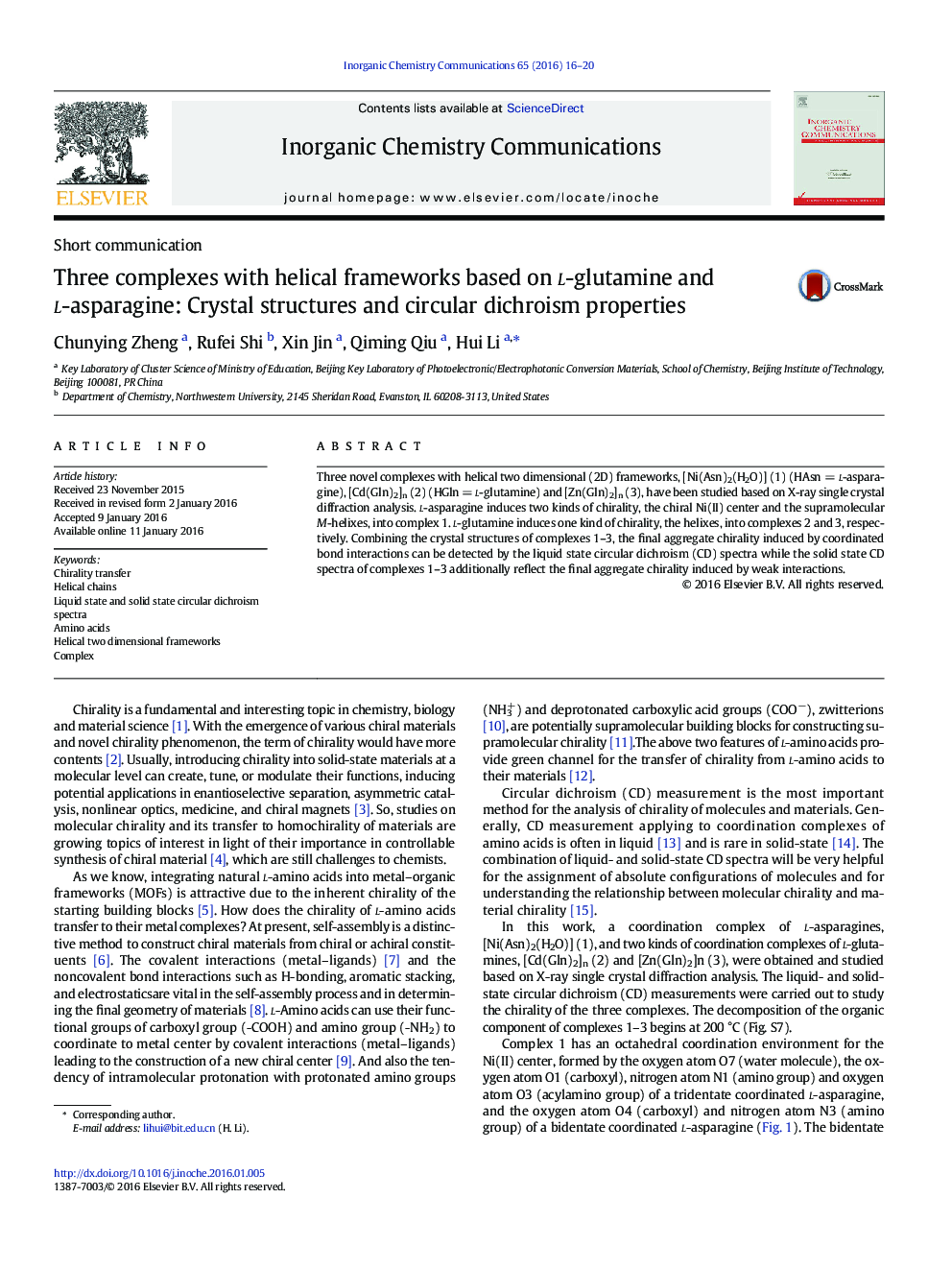| Article ID | Journal | Published Year | Pages | File Type |
|---|---|---|---|---|
| 1301250 | Inorganic Chemistry Communications | 2016 | 5 Pages |
•Three novel amino acid complexes with helical frameworks were obtained.•l-asparagine induces a chiral metal center and M-helixes into complex 1.•l-asparagine acts as both a tridentate and a bidentate ligand in complex 1.•The liquid and solid state CD spectra of both ligands and complexes were analyzed.
Three novel complexes with helical two dimensional (2D) frameworks, [Ni(Asn)2(H2O)] (1) (HAsn = l-asparagine), [Cd(Gln)2]n (2) (HGln = l-glutamine) and [Zn(Gln)2]n (3), have been studied based on X-ray single crystal diffraction analysis. l-asparagine induces two kinds of chirality, the chiral Ni(II) center and the supramolecular M-helixes, into complex 1. l-glutamine induces one kind of chirality, the helixes, into complexes 2 and 3, respectively. Combining the crystal structures of complexes 1–3, the final aggregate chirality induced by coordinated bond interactions can be detected by the liquid state circular dichroism (CD) spectra while the solid state CD spectra of complexes 1–3 additionally reflect the final aggregate chirality induced by weak interactions.
Graphical abstractThe chirality transfer in three novel amino acid complexes was discussed in crystallography. The solution and solid state circular dichroism (CD) spectra of both ligands and complexes were measured to research the sign-to-configuration relationship.Figure optionsDownload full-size imageDownload as PowerPoint slide
